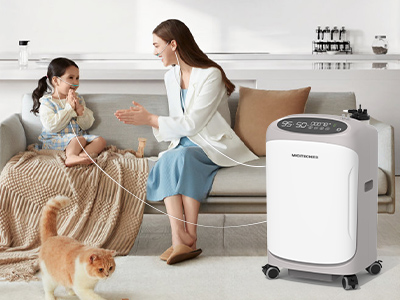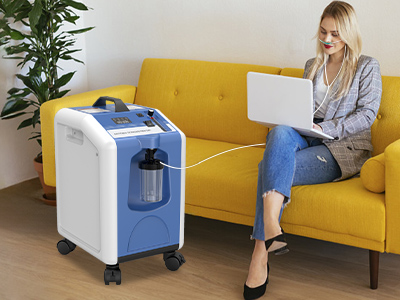30 Sep 2024
An oxygen concentrator is a medical device designed to deliver concentrated oxygen to individuals with respiratory conditions. Unlike oxygen tanks, which store oxygen under pressure, concentrators extract oxygen from ambient air, filtering out nitrogen and other gases. This process typically involves a molecular sieve system, making them both cost-effective and convenient for long-term use.

Introduction to Hypersensitivity Pneumonitis
Hypersensitivity pneumonitis (HP), often referred to as extrinsic allergic alveolitis, is a complex inflammatory response of the lungs triggered by inhaling organic dust, molds, or other allergens. Individuals with this condition often exhibit a range of symptoms, including cough, dyspnea, and fatigue, which can escalate if exposure continues. Early diagnosis and intervention are crucial to prevent progression to chronic lung disease.
The Connection Between Hypersensitivity Pneumonitis and Oxygen Therapy
For patients with hypersensitivity pneumonitis, maintaining adequate oxygen levels is paramount. Oxygen therapy can alleviate symptoms by ensuring that the lungs receive the necessary oxygen for effective functioning. In many cases, oxygen concentrators provide a steady supply of oxygen, which is especially beneficial during acute exacerbations or chronic management of the disease.

Benefits of Using an Oxygen Concentrator for Patients
The integration of an oxygen concentrator into the treatment regimen for hypersensitivity pneumonitis can significantly enhance the quality of life for patients. By improving oxygen saturation levels, these devices help mitigate the feeling of breathlessness and improve overall respiratory function. Furthermore, the portability of modern concentrators allows patients to maintain mobility and engage in daily activities without the burden of traditional oxygen tanks.
When to Use an Oxygen Concentrator
Determining when to initiate oxygen therapy is essential. Indicators for using an oxygen concentrator may include persistent hypoxemia (low blood oxygen levels), increased shortness of breath, and limitations in physical activities due to respiratory symptoms. A healthcare provider can perform assessments, such as pulse oximetry, to evaluate a patient’s need for supplemental oxygen and tailor the treatment accordingly.
Guidelines for Effective Use of Oxygen Concentrators
To maximize the benefits of oxygen concentrators, patients should follow best practices. This includes understanding the device's settings, ensuring it is properly maintained, and regularly checking for any issues. Safety considerations, such as avoiding flammable materials and ensuring adequate ventilation, are critical to prevent complications associated with oxygen therapy.
Potential Challenges and Considerations
While oxygen therapy is beneficial, it is not without its challenges. Patients may encounter limitations, such as difficulty obtaining a prescription or adapting to the device. Moreover, misconceptions about oxygen use—such as the belief that it will lead to dependency—need to be addressed. Education about the necessity and safety of oxygen therapy is vital for both patients and caregivers.
Conclusion and Future Directions
As research continues into hypersensitivity pneumonitis, the role of oxygen therapy is expected to evolve. Ongoing studies may reveal new insights into optimal management strategies and the potential for innovative treatments. The utilization of oxygen concentrators represents a crucial component in enhancing the lives of those affected by this condition, ensuring they can breathe easier while navigating the complexities of their health.
Keywords: oxygen concentrator
Originally published 30 Sep 2024, updated 30 Sep 2024.